ESCAPE
Mountain Zebra National Park – back from the brink
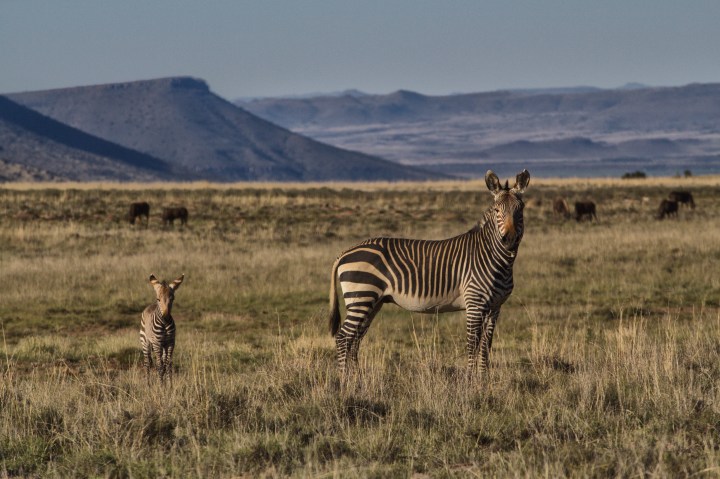
An 18th-century wildlife tragedy becomes a 21st-century success story.
The best time to be at the Mountain Zebra National Park outside Cradock in the Eastern Cape Karoo is at dawn. As the sky turns from black to pink to blue, the clear morning light sweeps up the ironstone krantzes of the Bankberge in dramatic silence.
A Karoo chat drops lightly to Earth and flexes its wings in a swift curtsey. A ground woodpecker takes up its post beside an ant nest. A pale chanting goshawk banks and circles overhead. Glossy lizards begin to bustle among enormous boulders, split by decades of intense heat and cold.
Our friend Michael Antrobus of Long Acre farm outside Cradock loved going to the park with us. We’d always stop at a certain spot on the Rooiplaat Plateau, where he’d point out seven visible magisterial districts. On a clear day, you could even see the distant jut of the Compassberg near Nieu-Bethesda.
Antrobus told us about the layering of the ironstone and sandstone in the mountains, the fertility of the earth and the nutrition in its grasses, showed us the places where dassies had their strongholds and where their mortal enemy, the Verreaux’s eagle, circled in the sky.
He introduced us to the hidden history of the Mountain Zebra National Park. More than a century ago, massive migrations were recorded sweeping periodically across these dry plains; millions of animals following an irregular and unknown path. Except for the quagga, the component members of those historic herds are still here.
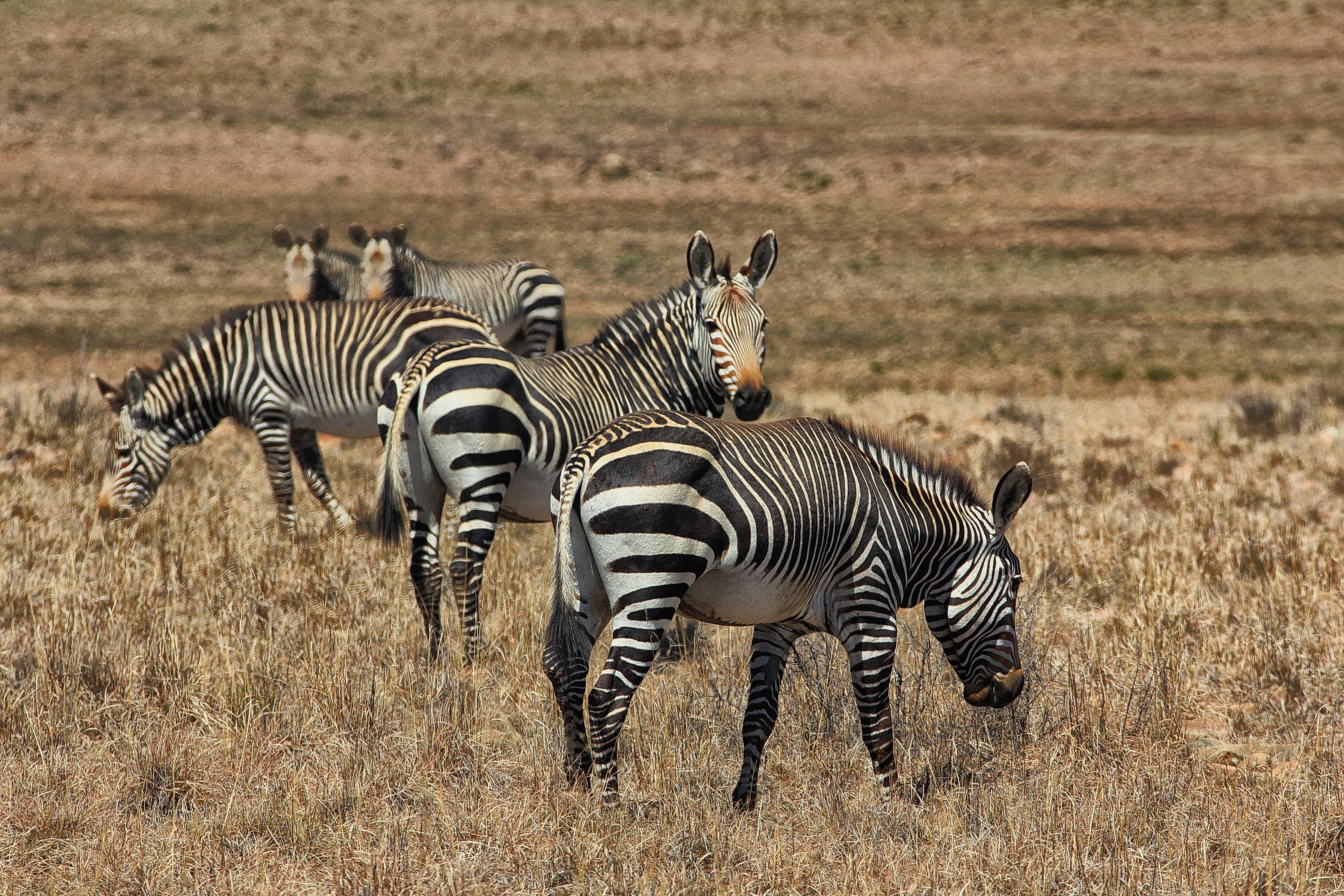
Mountain zebras have wattles, white bellies and gridiron stripes on their rumps and right down to their hooves. Image: Chris Marais
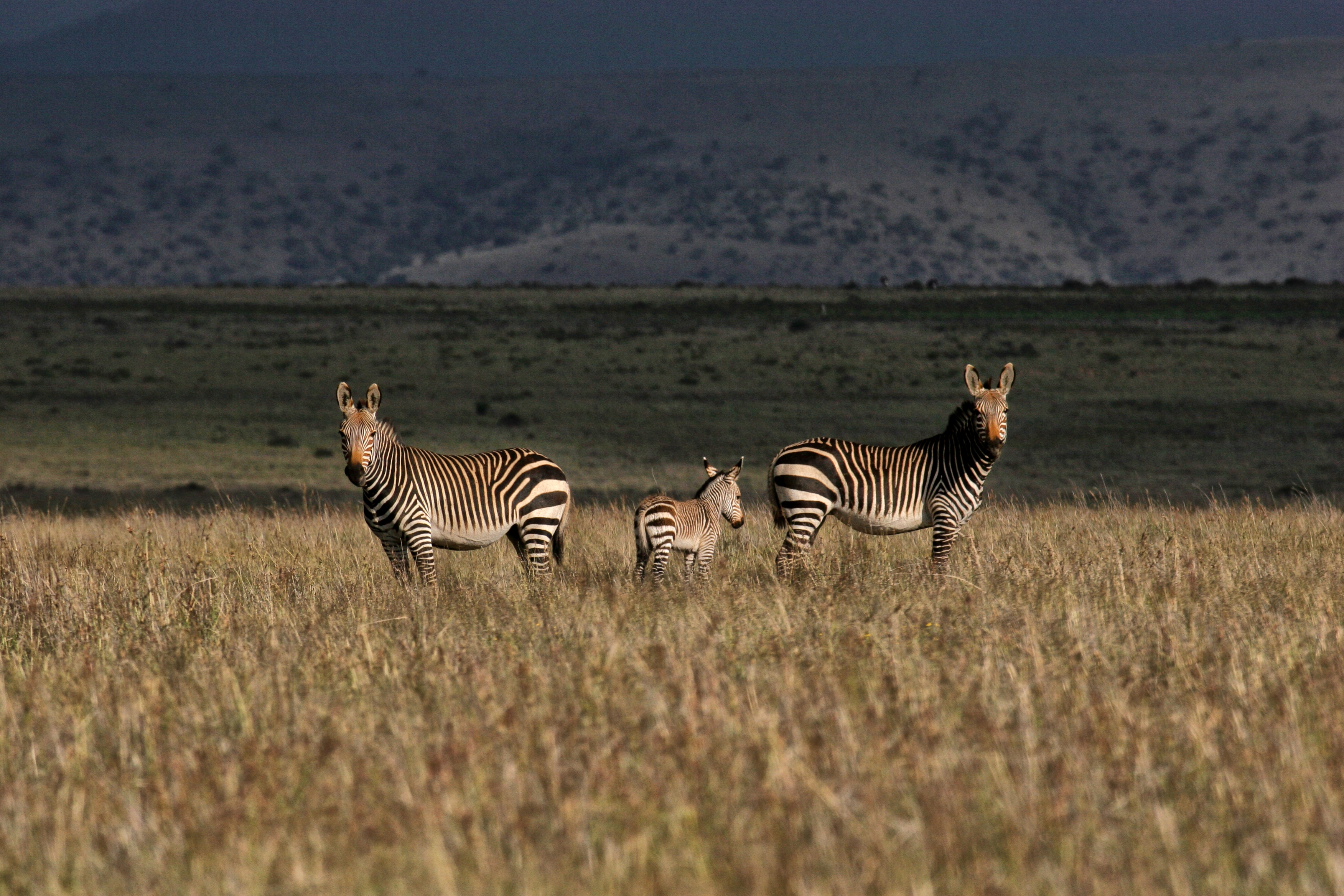
From its tiny beginnings in the 1930s, the Mountain Zebra National Park has expanded to more than 28,000 hectares, thanks in large part to British wildlife artist David Shepherd who donated two paintings to auction and raise funds for more land in the 1990s. Image: Chris Marais
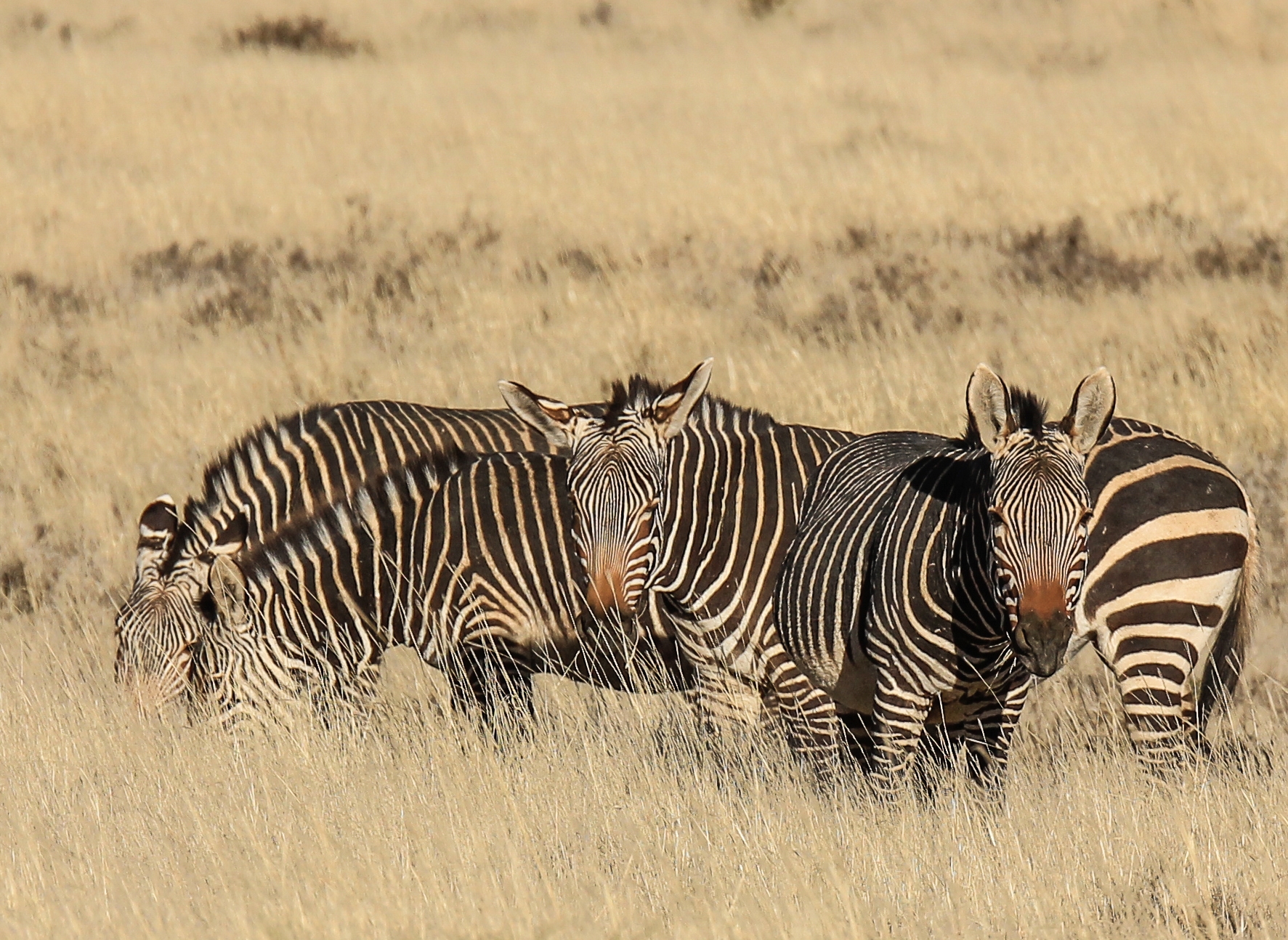
This zebra is a hardy mountain habitat specialist and the smallest of the wild equids. Image: Chris Marais
Teeming with life
German hunter and explorer Henry Lichtenstein writes of not finding much to hunt near Cape Town after he arrived in 1803. But once he ventured over the mountains and into the hinterland, he came upon the Karoo. And it was teeming with wildlife.
“Here also the larger sorts of game, as hartebeests, elands, ostriches and quagga were to be seen wherever our eyes were directed.”
Captain William Cornwallis Harris, who arrived in South Africa in 1836, speaks of wildlife “pouring down like locusts from the endless plains”.
In the mid-1800s, Scottish hunter Roualeyn Gordon-Cumming wrote:
“I beheld the whole country, as far as my eye could reach, actually white with springboks, with here and there a herd of black gnoos or wildebeest, prancing and capering in every direction, whirling and lashing their white tails as they started off in long files on our approach.”
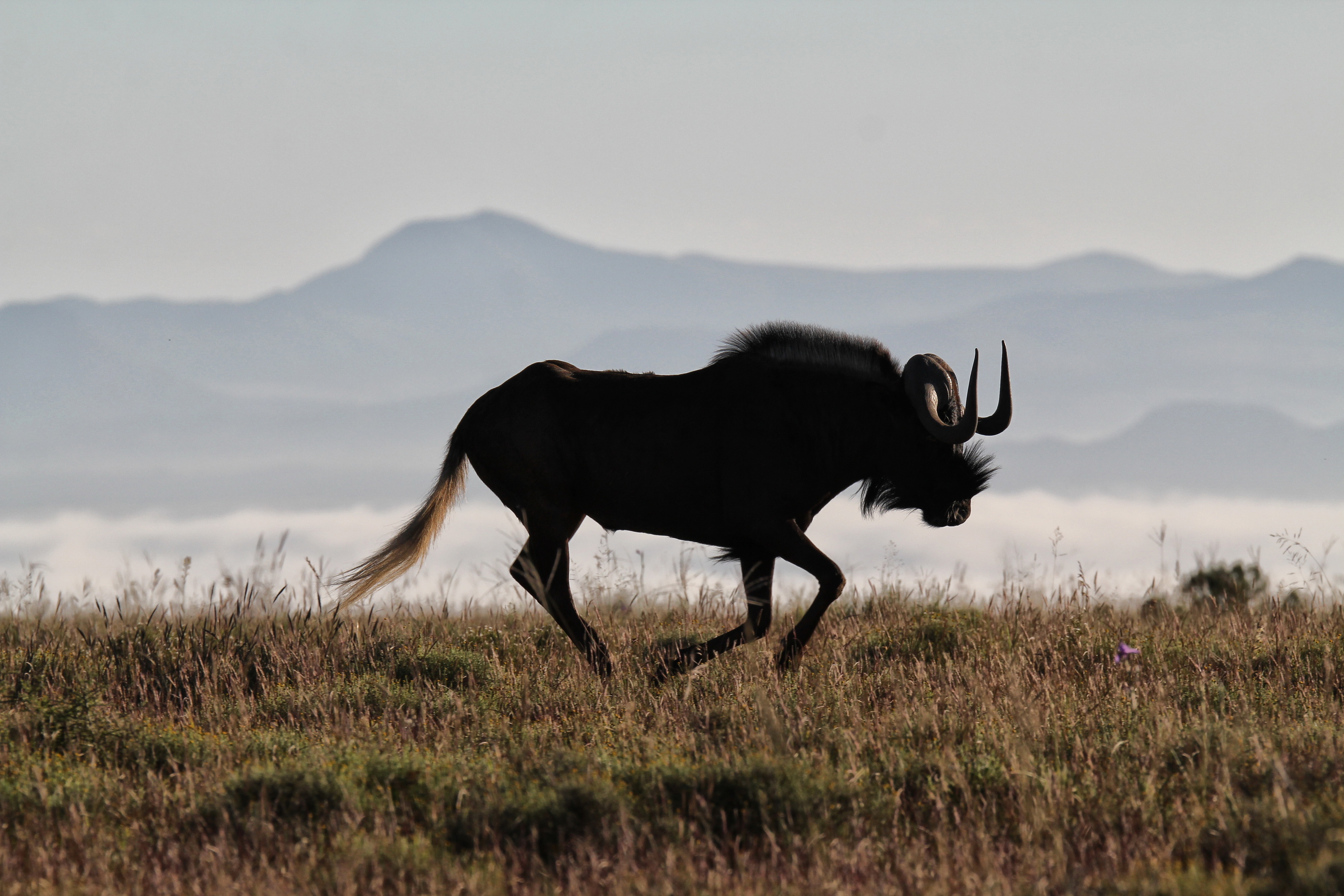
“A more whimsical compound than the Gnoo could scarcely have been thrown together, or a monster imagined of more fantastical and anomalous exterior.” – William Cornwallis Harris. Image: Chris Marais
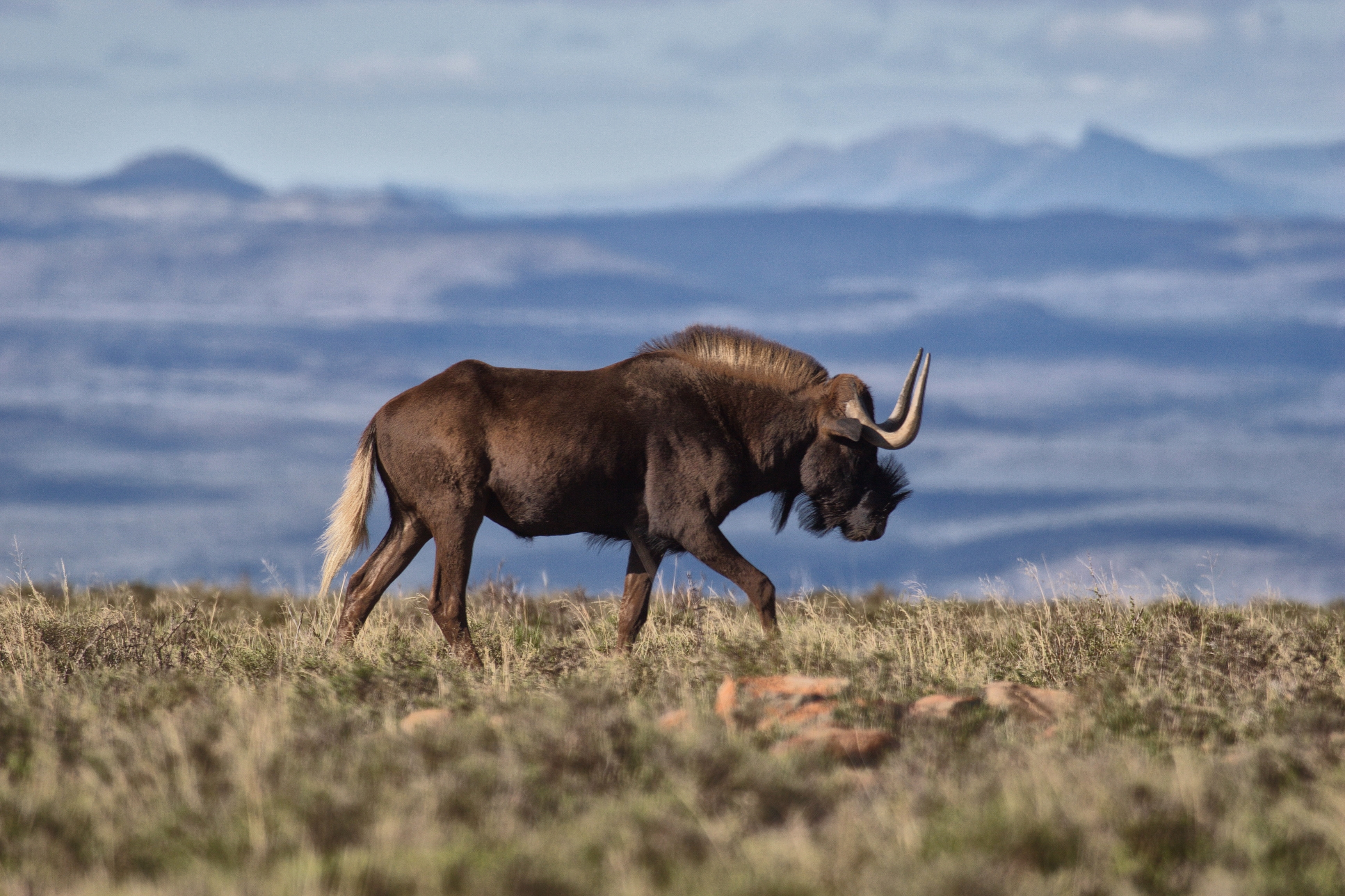
Black wildebeest, which only occur in South Africa, have a rather strange and distinctive profile. Image: Chris Marais
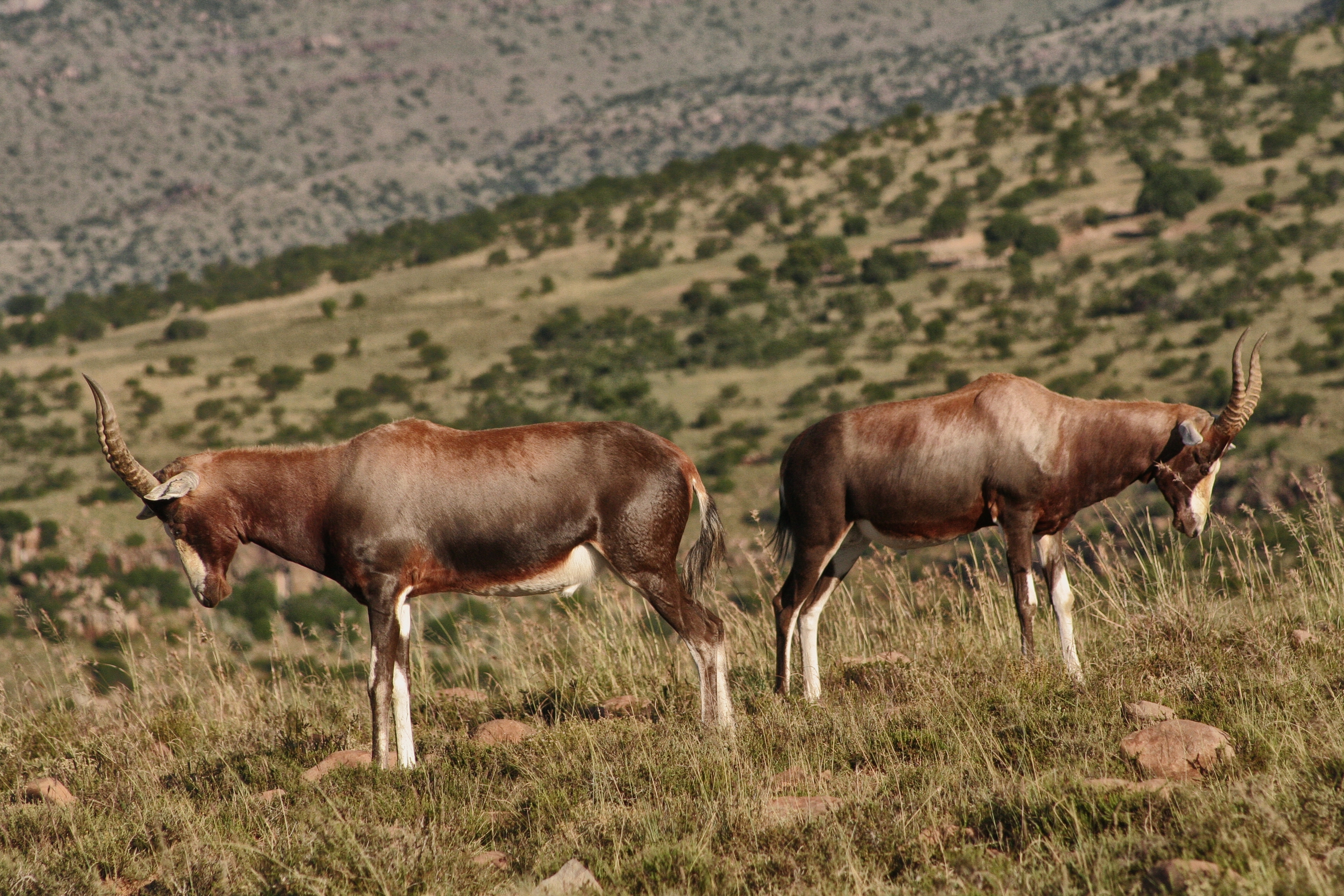
Rival bontebok males, settling their differences with quaint rituals on the high mountain plains. Image: Chris Marais
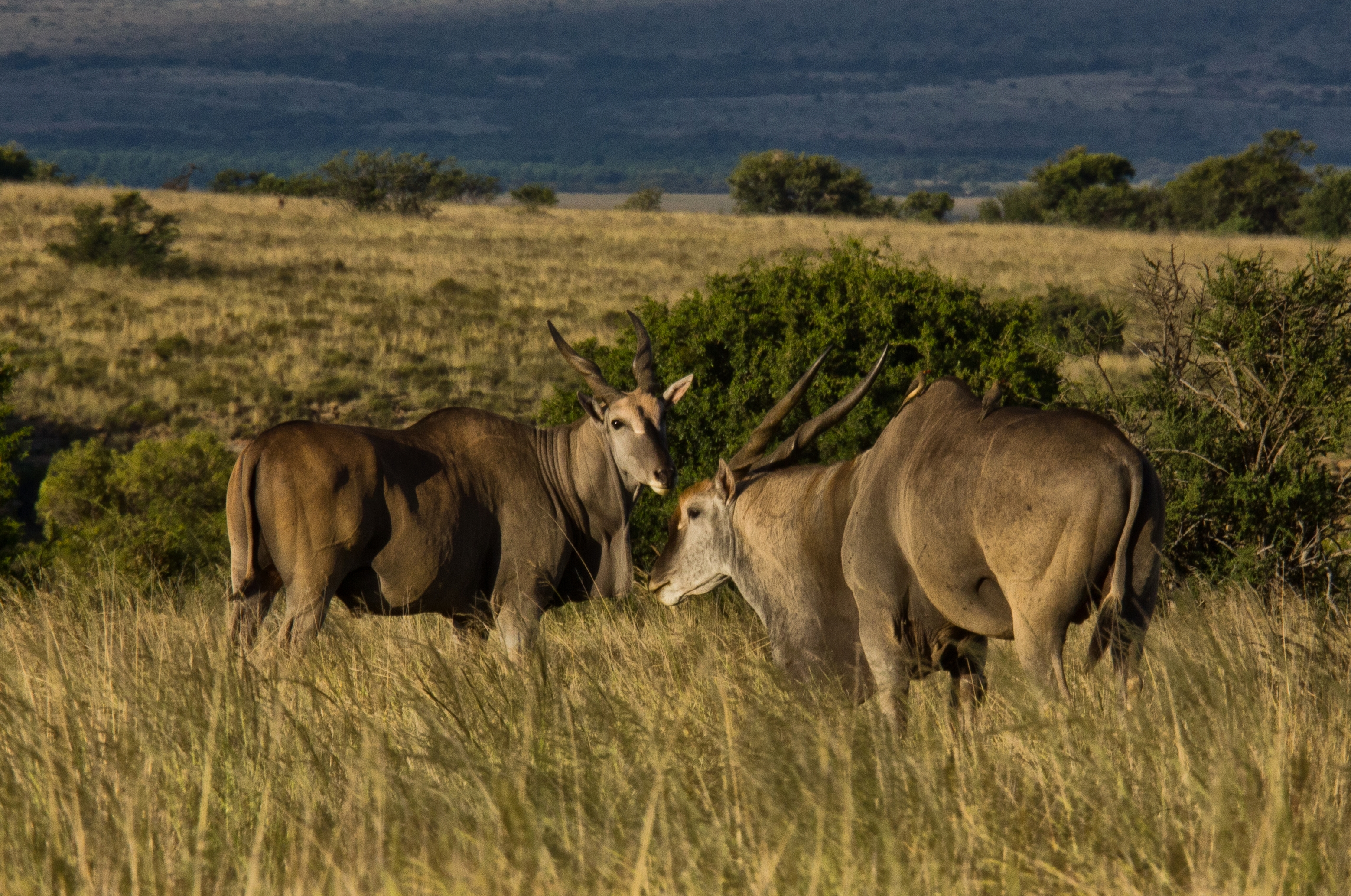
Eland, the largest antelope in Africa, is the ultimate survivor, able to thrive in all kinds of habitats. It was almost domesticated, but its ability to effortlessly clear three metre fences makes farming them too much of a challenge. Image: Chris Marais
These words of admiration were to be followed by fusillades of bullets as hunters blazed away. The northern Free State became known, rather grimly, as the Riemland (Land of Hides or Leather Thongs). In 1866, a single company in Kroonstad exported 157,000 blesbok and wildebeest skins. Between 1870 and 1871, records show that half a million blesbok, wildebeest and zebra skins were shipped from the port of Durban.
For similar reasons, an area between Cradock and Tarkastad was called Vlekpoort, so named for the animal skins that flecked the veld as they were dried on rocks.
Slaughter for the pocket
Wildlife products were legal trade then, as good as hard cash. Anyone with a rifle, sufficient bullets and a good eye could make a living from ivory or skins. Cumming noted that in the countryside, venison was the staple food of both farmer and servant.
“The skulls and horns of hundreds of black wildebeest and springbok were to be seen piled in heaps and scattered about the outhouses of the farm.”
Buffalo horns were made into household utensils, he reported. Eland-fat candles lit dark rooms at night.
The staggering scale of the slaughter has now passed out of human memory, but eventually gave even the keenest hunters pause for thought. Cumming, himself accused of being bloodthirsty, reported:
“I was astonished at the number of skeletons and well-bleached skulls with which the plains were covered. Hundreds of skulls of springbok and wildebeest were strewed around wherever the hunter turned his eye.”
The springbok were always the majority members of those periodic great wildlife treks that rivalled those of the Serengeti in size. In fact the springbok were often referred to as trekbokken (travelling buck). But there were many other species that joined the columns of animals hundreds of kilometres long, heading always towards the smell of rain and green grass.
As Cumming noted, the black wildebeest formed part of the herds, as well as blesbok, red hartebeest and eland. Also present in the Mountain Zebra National Park today are the cheetahs, lions, brown hyenas and jackals that would have followed the great herds, picking off the weaklings.
The fact that most of these animals are still present, and their numbers growing, is testament to the difference a few determined conservation-minded individuals can make.
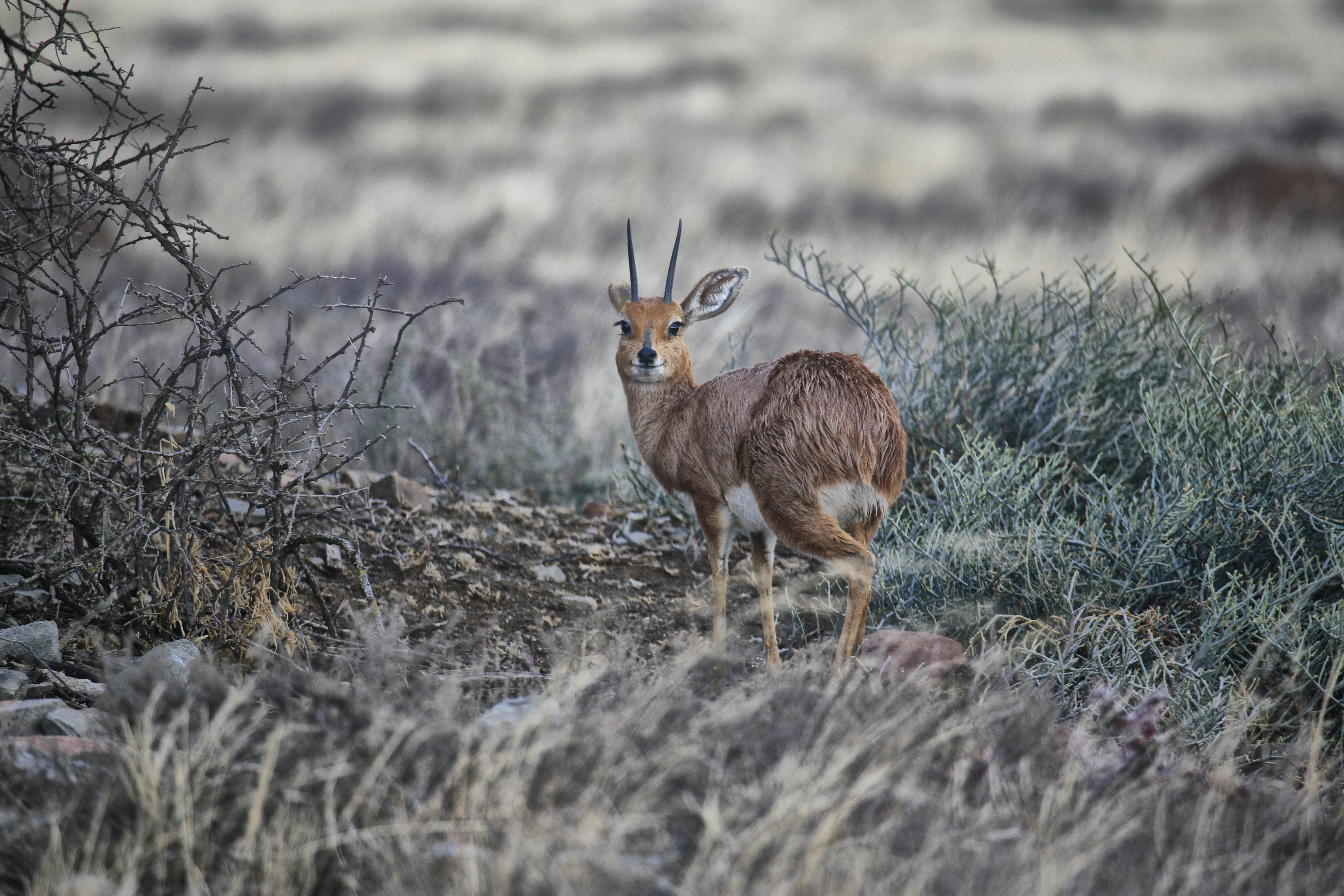
An adorable little steenbok, one of the smallest members of the antelope tribe. Image: Chris Marais
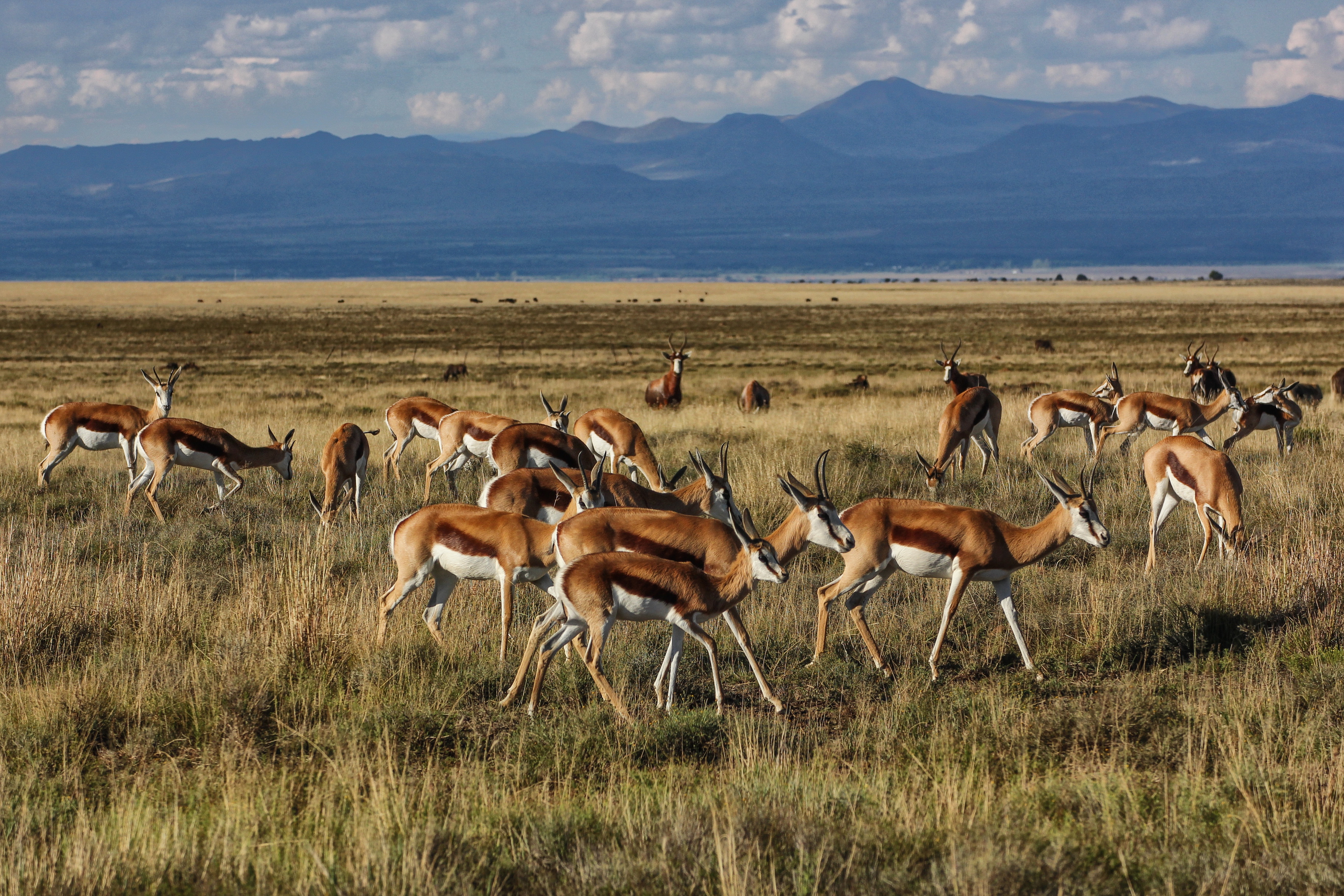
The plains were once white with massed springbok herds. Image: Chris Marais
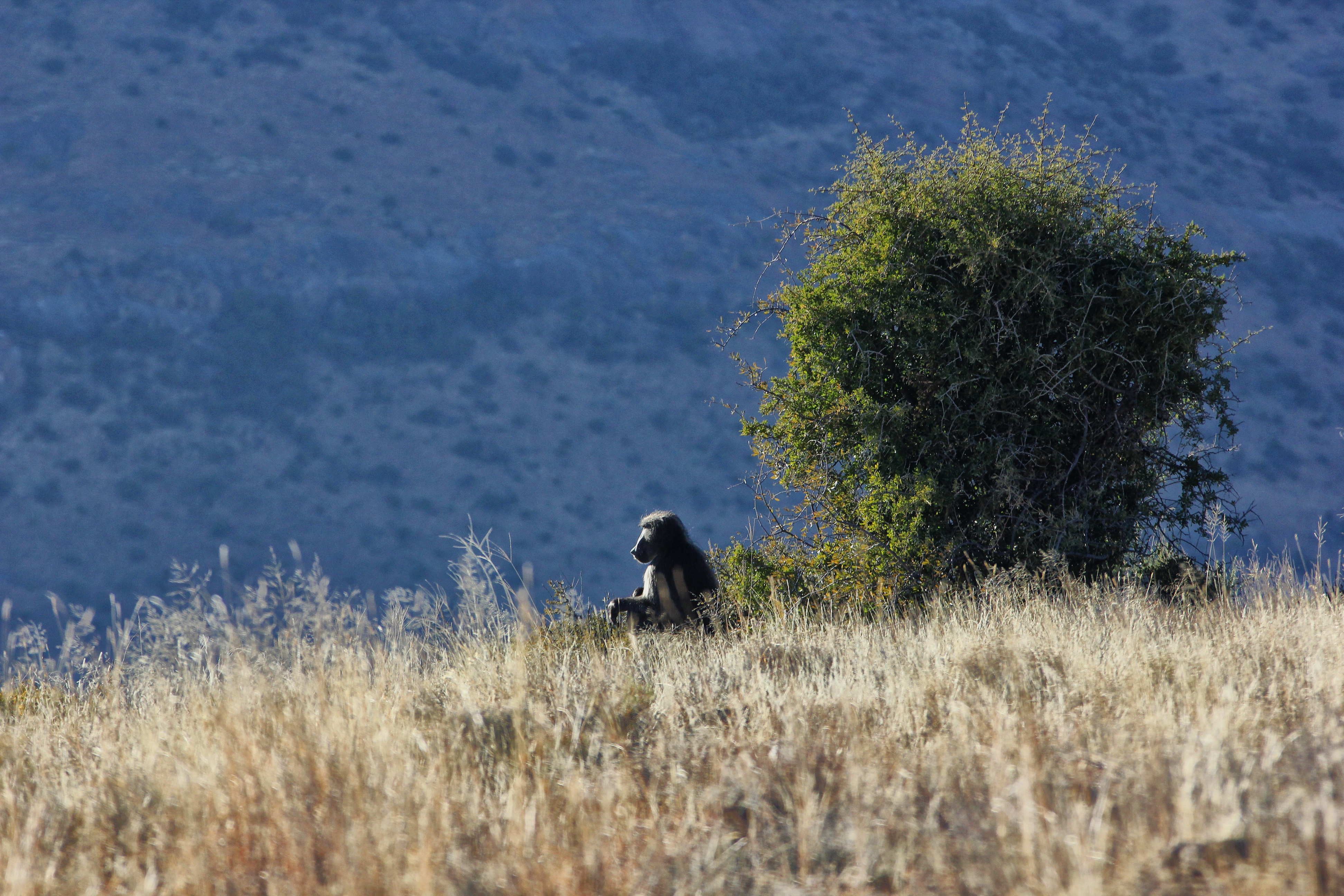
A baboon calmly surveying his mountain kingdom, backlit by the early morning sun. Image: Chris Marais
Texas Jack and Mexican Bill
The Cape mountain zebra that gave the park its name would not have been among the travelling herds, although occasional migrations were recorded close by. This zebra is a hardy mountain habitat specialist, the smallest of the wild equids. It has neat, hard hooves, long donkey-like ears, a characteristic orange-brown muzzle and a wattle under its neck. Its crisp black and white stripes extend all the way down the legs, finished off with a gridiron frieze on the rump and a white belly.
Breeding herds typically have a dominant stallion with a harem of up to five mares and their foals. The mares will usually stay with their stallion for life. Like horses, zebras fight dirty, using hooves and teeth. They have resisted most attempts at taming.
But back in 1903, the dashing Cape mountain zebra of the Bankberge outside Cradock attracted the attention of a troupe of American circus riders, led by one Texas Jack Jnr.
This famous showman’s Wild West Circus went all over South Africa, and was a special hit with the mining camps of the Reef and little platteland towns everywhere. It was in South Africa that Texas Jack met and trained Will Rogers, who later became an iconic American cowboy roper and rider.
However, on this occasion Texas Jack Jnr’s crew chased these wild, striped equines up and down the valleys outside Cradock. Sceptical locals gathered with picnic baskets to watch the show, as the cowboys actually managed to capture some.
The most dramatic incident came later when one of the circus riders, Mexican Bill, accepted a bet from the locals that he could ride a wild zebra.
Farmer Paul Michau reported that Mexican Bill lassoed one of the untamed beasts, leapt down from his horse’s back, threw a saddle over the zebra “and with great intrepidity”, rode down the mountainside to the homestead.
It was, in Michau’s words, “a feat I would never have deemed possible had I not myself witnessed it”. The farmers ruefully handed over their money. This utterly bizarre performance by Texas Jack and Mexican Bill happened within what later became the Mountain Zebra National Park.
By this time, numbers of Cape mountain zebras were unknown, but would have been dramatically lower than only decades before. The zebras steadily lost ground to humans who hunted them for meat and hides. These skins, and those of the now extinct quagga, were turned into storage sacks in the 1800s. Mitch Reardon, author of Wild Karoo, points out that this is why large grain bags are still called streepsakke (striped sacks) in the Eastern Cape.
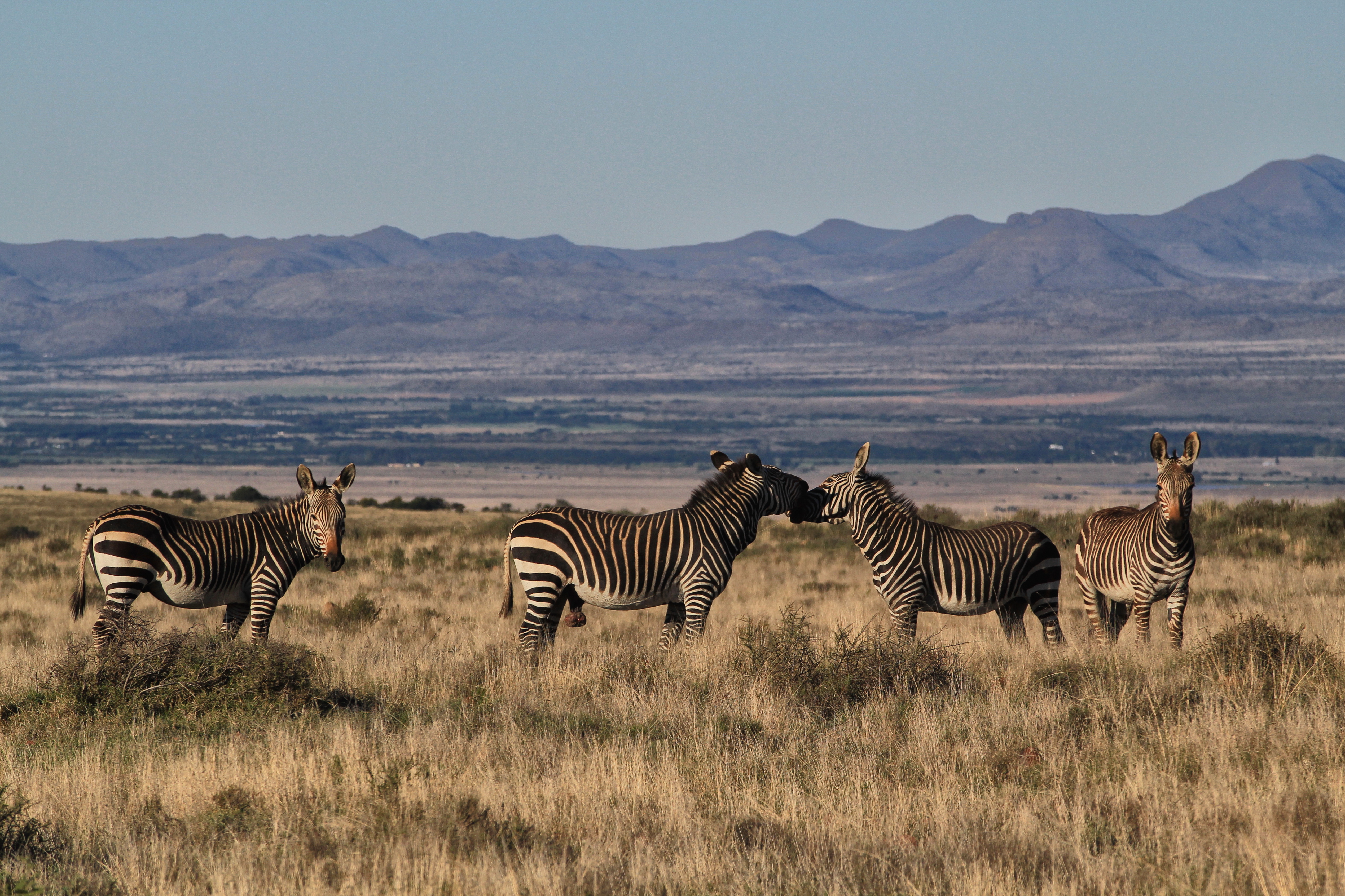
Breeding herds of mountain zebras typically have a dominant stallion with a harem of up to five mares and their foals. The mares will usually stay with their stallion for life. Image: Chris Marais
Saved by farmers
By the 1930s, when Cape mountain zebra numbers were down to a few dozen, two farming families with a love for nature ended up saving the species with the help of SA National Parks.
In 1937, the Michau family relinquished 1,712 hectares and six mountain zebras. Only one was a mare, and she was somewhat past her prime. Later, when she died and the species looked set to go the way of the quagga, the neighbouring Lombard family offered 11 mountain zebras that were still on their farm.
From its tiny beginnings, the park has expanded to more than 28,000 hectares, thanks in large part to British wildlife artist David Shepherd who donated two paintings to auction and raise funds for more land in the 1990s. There are now more than 750 mountain zebras. Hundreds more have been translocated from here to other reserves.
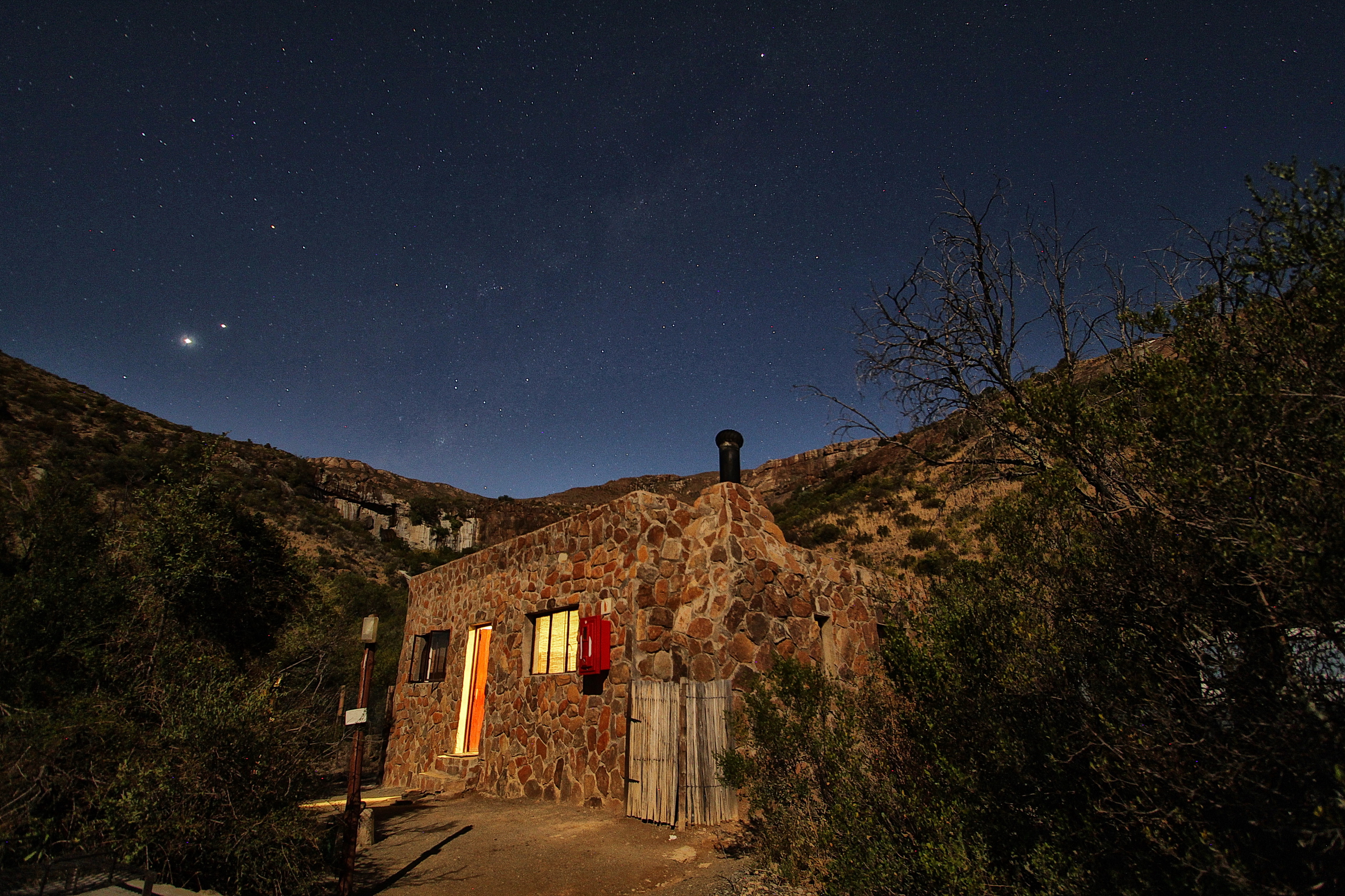
In an amphitheatre of rock, one of the mountain cottages at this national park just outside Cradock. Image: Chris Marais
The Monstrous Gnoo
Black wildebeest are only found in South Africa, and it seems every early explorer had something to write about them – either about their strange clown-like antics, massive herds or odd appearance. They have meathook-shaped horns, stiff hair on their muzzles and manes, heavy shoulders and delicate hindquarters, plus a pale fly-whisk tail.
William Cornwallis Harris’s description remains a classic: “A more whimsical compound than the Gnoo could scarcely have been thrown together, or a monster imagined of more fantastical and anomalous exterior.”
They are known for suddenly galloping back and forth across the veld for no apparent reason, then indulging in what can only be called a wild form of gnu breakdancing.
Territorial males stay apart and fiercely defend their turf but advertise their status to passing females with an alluring hiccup, a call that can be heard over a kilometre away. If a female shows any interest, she can expect the next come-hither trick in the black wildebeest arsenal: a tail flicked over her face.
Black wildebeest can be aggressive and their horns are deadly. But when it comes to deciding matters between rival males, they prefer to first indulge in rituals and pageantry. Their repertoire includes dropping down to roll on their backs, getting up to make exaggerated nodding motions, jumping around on stiff legs, lashing their tails so hard that they make an audible swish, and bawling out their typical cry: “ger-nu.”
Terblans and Delport to the rescue
As with the zebras and much else, Europe developed a liking for its hide. Between the mid-1800s to the end of that century, black wildebeest numbers plummeted from millions to a scant few hundred. And just as with the mountain zebra, it was two farming clans that rescued the species.
By 1890, a certain Free State farmer near Kroonstad called Piet Terblans heard shots, and on investigation, found 27 dead black wildebeest, left to rot. Only one had been skinned. Wildlife writer Don Boroughs records this as the moment Terblans decided to turn the tide. Without fanfare, the farmer quietly turned his property into a black wildebeest sanctuary. When he died two decades later and hunting resumed on his property, most of the animals fled and took shelter on neighbour Hendrik Delport’s spread.
It was the herds from Delport’s farm that were later translocated to other nature reserves by Free State conservation officials and SA National Parks.
The sweeping open vistas of the Mountain Zebra National Park allow visitors a superb insight into the intriguing behaviour of wild animals, specifically the plains game. A medieval wildlife pageant featuring their quaint rituals of knightly combat is constantly unfolding on this grand ironstone stage.
The lovely leapers
Kudus, South Africa’s second-largest antelope species, also renowned for their high-jumping abilities, have defied the odds too. During the 1800 and early 1900s, they were also mercilessly hunted for their exceptional hides. Hunter Henry Anderson Bryden writes in his book, Nature and Sport in South Africa (1897):
“The hide of the koodoo is one of the most valuable of all South African antelopes; it commands a high price, and is much sought after. From it are manufactured velschoens (Boer shoes), leather thongs, whiplashes and even harnesses. The hide is thinnish but excessively tough.”
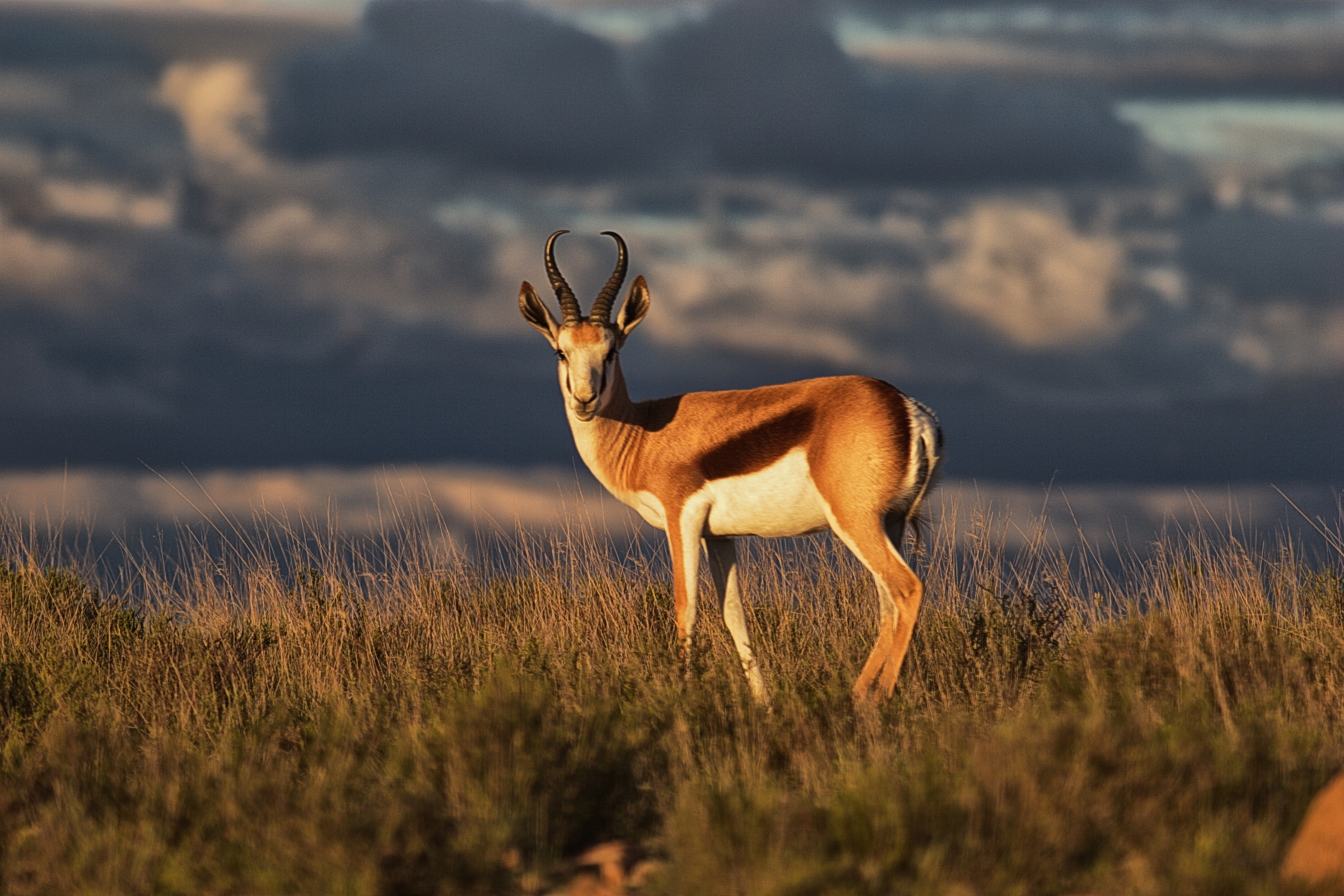
Despite their delicate appearance, these cinnamon-toned, black and white antelope are tough. They thrive in the extreme temperatures of the drylands. Image: Chris Marais
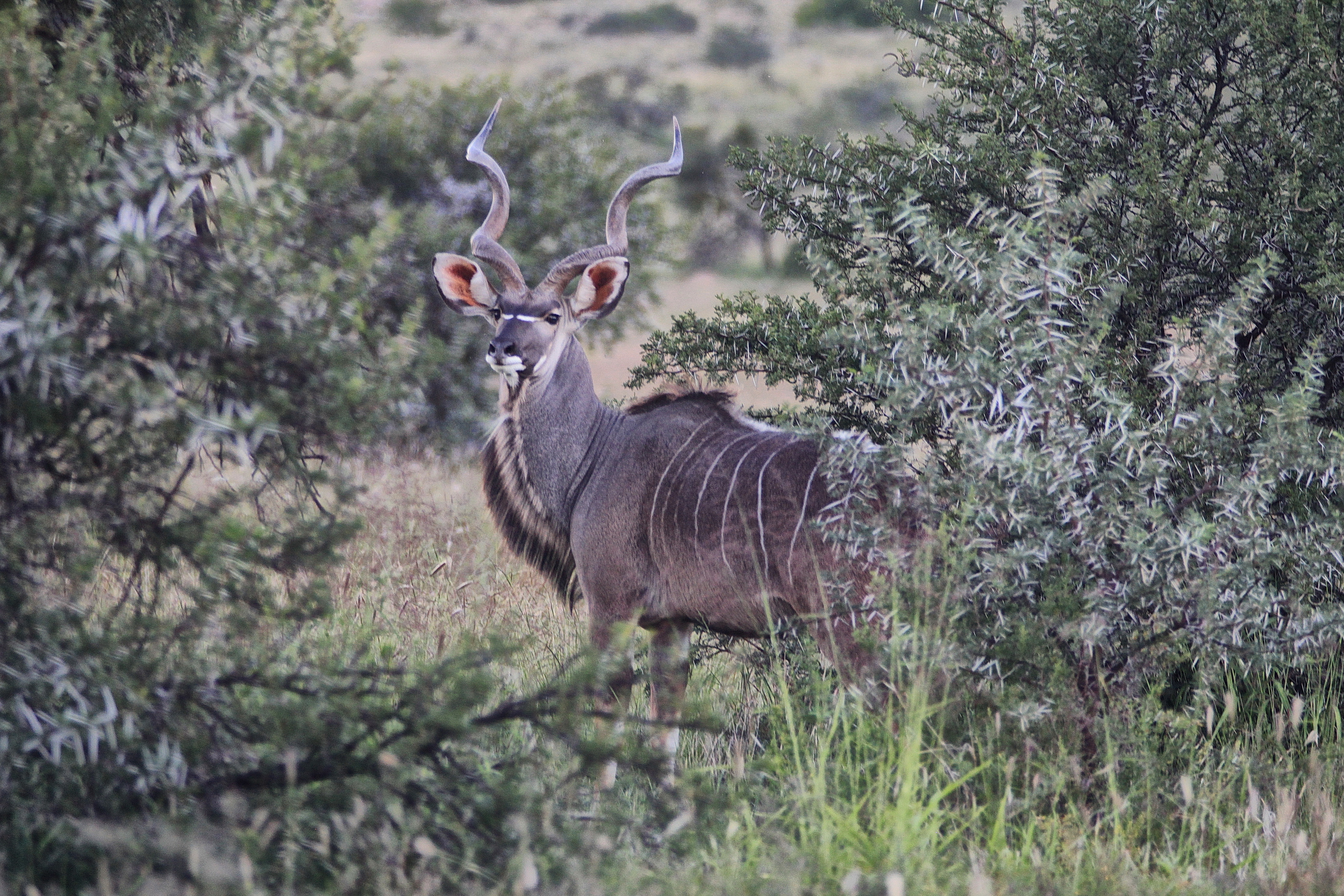
In the past few decades, increasing numbers of kudus have been seen in the thornveld north of Cradock, spreading up from their old stronghold of valley bushveld in the south. Image: Chris Marais
A mere century ago, they were only seen on the fringes of the Karoo, with isolated strongholds in the thick valley bushveld north of Port Elizabeth.
Yet today, despite being periodically knocked back by drought or disease, they are spreading north of Cradock for the first time in living memory. CJ Skead had a theory that kudus received a critical 10-year reprieve when guns and ammunition were confiscated from farmers during World War 2. Ammunition remained expensive well into the 1950s.
He adds that bush encroachment from overgrazing and poor farming techniques might also have played a role in the kudu turnaround.
Today, the mountain zebras, the black wildebeest, the blesbok, the kudu, eland and red hartebeest are casually overlooked as part of the scenic backdrop of this and other parks. They’re just seen as the plain old plains game.
In the late afternoon, with the braai fire going, and an elephant shrew whiffling around the ironstone boulders, lift a glass to the conservationists. Here’s to the Michaus, the Lombards, the Terblans family, the Delports and countless others who pushed back and fought to conserve the intricate jigsaw parts of the natural world before you. DM/ML
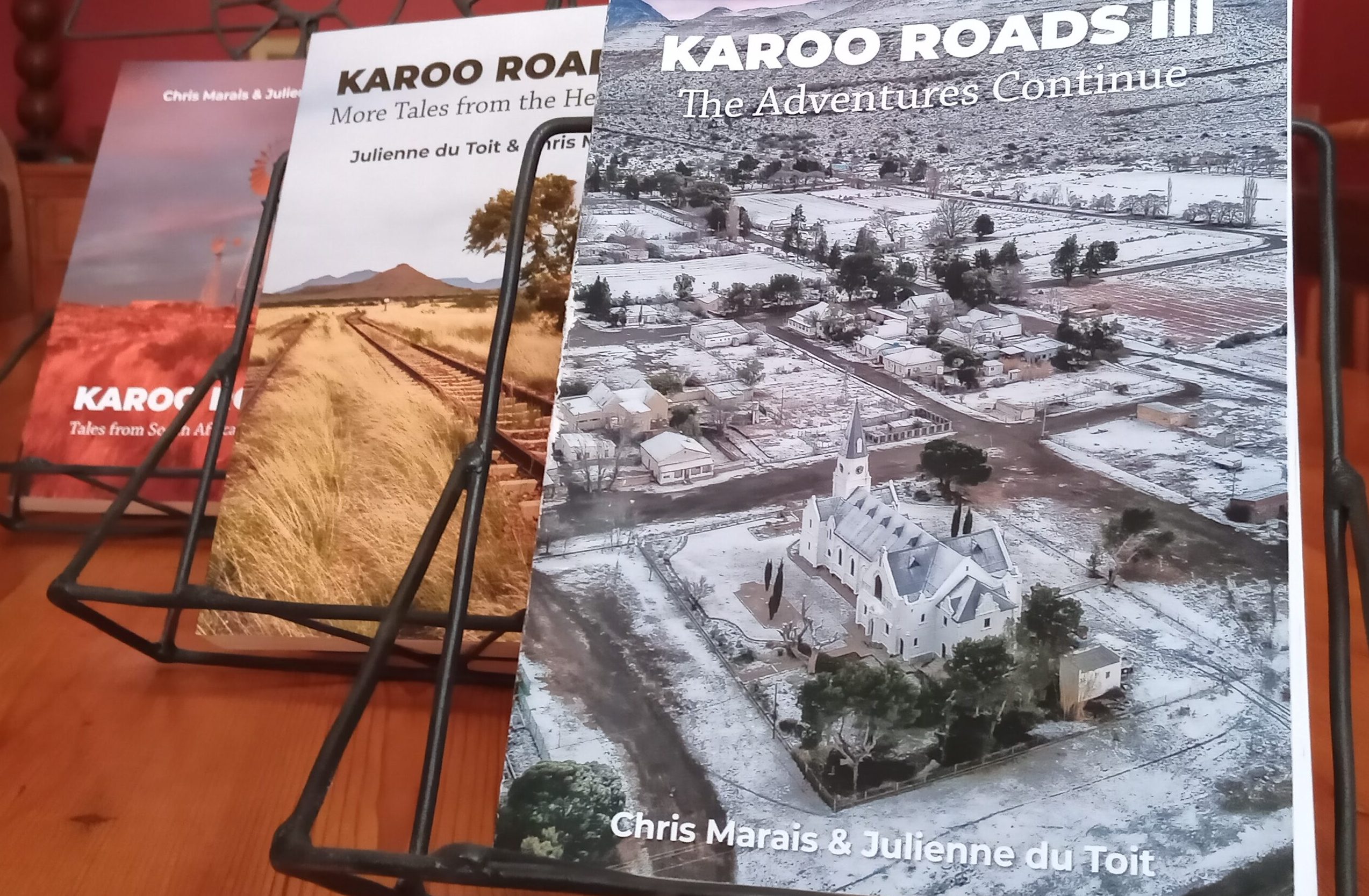
‘Karoo Roads’ Collection. Image: Chris Marais
This is an extract from Karoo Roads I – Tales from South Africa’s Heartland, by Chris Marais and Julienne du Toit.
For an insider’s view on life in the Dry Country, get the three-book special of Karoo Roads I, Karoo Roads II and Karoo Roads III for only R800, including courier costs in South Africa. For more details, contact Julie at [email protected]
In case you missed it, also read Catch the wind – The meditative magic of a Karoo windpump


















 Become an Insider
Become an Insider
I can thoroughly recommend the 3 volumes of Karoo Roads. On another note, I understood that SA Plains zebra are now classified as Equus quagga, because of a DNA comparison with a quagga specimen in a Dutch museum. I also understood that there was a breeding programme (at Mokala ?) to “recreate” quaggas from zebras which had very indistinct markings on their hindquarters. I’d appreciate it if someone knowledgeable could confirm. The zebras further north are genetically different and are still classified as Equus burchelli.